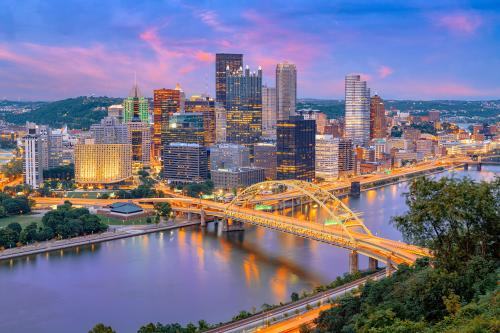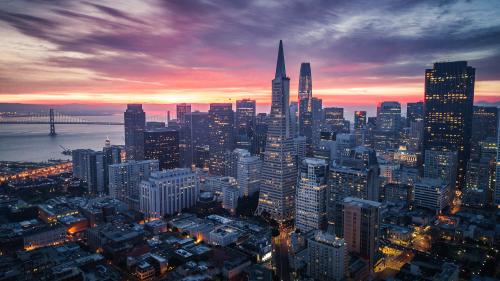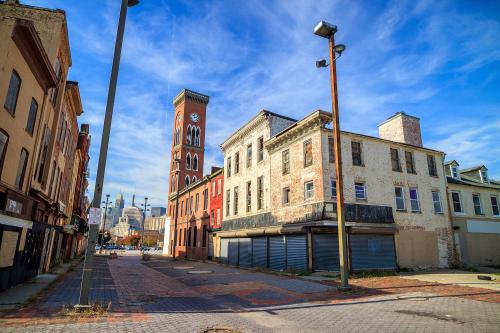Innovation districts “supercharge the innovation economy,” said Bruce Katz during an event today on the rise of a new geography of innovation in America. Katz, vice president and director of the Metropolitan Policy Program at Brookings, and Julie Wagner, a nonresident senior fellow in Metro, are co-authors of report, “The Rise of Innovation Districts: A New Geography of Innovation in America,” that was released today.
The event featured speakers and panelists who discussed the growth of innovation districts and their impact on the wider community. Chattanooga Mayor Andy Berke offered his views after the panel discussion.
In his remarks, Katz outlined the “disruptive geography of innovation,” the factors that comprise innovation districts, and the ability to maximize job creation in these areas. In describing this “broad revaluing” of city space to shape human interaction, the flow of ideas, and proximity, Katz defined an innovation district this way (watch video):
Such places “supercharge the innovation economy,” Katz said, as each innovation job in a metropolitan area generates five additional local jobs. Some districts emerge from an “anchor plus” model in which urban areas are re-imagined with anchor institutions such as universities, research institutions, or companies at the heart of a burgeoning space for innovation.
Discussing the need for cities to create a “vision for growth,” Katz suggested that cities “find out who you are and do it on purpose,” making use of a Dolly Parton quote which would resurface throughout the event.
“Here’s the bottom line,” Katz said:
I think we’re at the beginning of the wave of growth of innovation districts in the United States. Again not because someone came up with some smart, federal program but because this is organically aligned with the destructive dynamics of our era, and represents a clear path forward for cities and metro areas. So our message today is that local leaders across many different sectors would be wise to unleash their own distinctive districts. Global companies, financial institutions, would be smart to embrace them. The state and federal government should get in the service of this growth because it is productive. It is innovative. It is inclusive. And it is sustainable. And the result could be the step toward building a much stronger and resilient economy going forward.
Watch:
The panel discussion that followed Katz’s remarks featured Washington Post reporter Lydia DePillis moderating four panelists.
John Fry, president of Drexel University and a leader of the Promise Zone initiative in Philadelphia, explained the goal to not only create this innovation district in the 30th Street area but also to be of service to distressed surrounding areas. The area includes Children’s Hospital, University of Pennsylvania, University City Science Center, University of the Science and also Drexel. Fry stressed the importance of holistic thinking in the development of such “aggregation points.”
Watch as Fry talks about where Philadelphia is in developing its own innovation district relative to cities like Boston, San Francisco and New York:
Nicole Fichera, general manager of the newly-opened Boston District Hall, explained the necessity of transforming an underutilized part of Boston into a vital component of the economic future by asking “public realm spaces to do more for our economy.” She described the space as “a gathering place for the innovation economy … a kind of living room for the innovation economy.” In addition to the importance of sustainable leadership and economic resilience, Fichera stressed that shared innovation and inclusiveness rested at the heart of District Hall’s design and goal because “connections are engine of innovation economy.”
During the program, Fichera responded to an audience member’s question about whether innovation districts were just another form of gentrification. “I don’t think gentrification is a foregone conclusion,” she said. Watch:
Kofi Bonner, regional vice president of Lennar Communities in San Francisco, described the redevelopment of a decommissioned Navy shipyard in the southeastern part of San Francisco into housing and innovation space. Bonner described the shipyard development’s far-reaching effect both on the opportunities provided to adjacent communities but also in the attraction of companies from Silicon Valley among other places. “Innovation happens anywhere and everywhere,” Bonner said, “and the fundamental issue is, how do you grow that innovation?” He described the two essential components:
Wagner, a co-author of the innovation districts report, who has lived and worked in Europe, described the distinctiveness of regional economies that shape each innovation district. Drawing from her transatlantic experience, Wagner celebrated the “reimagination of the urban economy” in places like Barcelona’s 22@, with their ability to create not only innovation but jobs as well.
Wagner asserted that despite the progress of innovation districts in Barcelona, east Berlin, and Stockholm, Europeans still need to learn from U.S. leaders on many issues, especially inclusion:
The event concluded with a conversation between Katz and Chattanooga Mayor Andy Berke. The mayor explained how Walter Cronkite once called Chattanooga “the dirtiest city in America,” a city that lost 10 percent of its population in the ’70s and ’80s. Yet, Mayor Berke added, it was the only city that regained its population after such a large loss and now hosts a “vibrant downtown,” a Volkswagen manufacturing plant (the only one in the U.S.), and an extensive network of broadband measured in gigabytes per second available to every home. “We have the fastest, cheapest, most pervasive internet in the western hemisphere,” he said. Watch:
Mayor Berke has positioned his city, a “midsized southern city” as he calls it, as a leader in how innovation spreads beyond major hubs like Boston, San Francisco and Philadelphia. “Our future,” he said, “is based on being the place that figures out how midsized southern cities tap into the innovation century and the role that we play.”
Watch:
Benjamin R. Jacobs, a senior advisor and co-founder of The JBG Companies, a Washington, D.C.-based real estate and investment company, welcomed participants to the event. Building on his experience in real estate, Jacobs, also a Brookings Trustee, highlighted viability and cohesiveness as two fundamental aspects in promoting sustainable urban development. He mentioned that the success of development depended on the availability of capital, human capital, mixed-use development, and luck.
Get full event audio and video here, and be sure to visit and download the new report, “The Rise of Innovation Districts.”



Commentary
Innovation Districts Are a Clear Path Forward for Cities and Metros
June 9, 2014